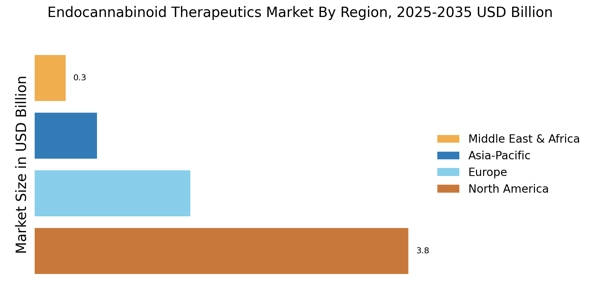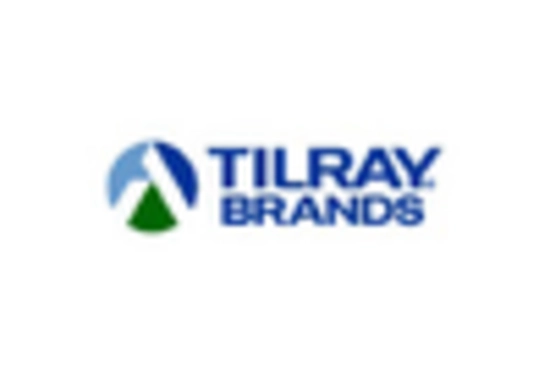Innovations in Delivery Systems
Advancements in delivery systems for cannabinoid therapies are poised to enhance the efficacy and appeal of products within the Endocannabinoid Therapeutics Market. Innovative formulations, such as transdermal patches, inhalers, and sublingual sprays, are being developed to improve bioavailability and patient compliance. These novel delivery methods may allow for more precise dosing and faster onset of effects, addressing some of the limitations associated with traditional consumption methods. As these innovations gain traction, they could potentially attract a wider range of consumers, thereby expanding the market. The Endocannabinoid Therapeutics Market stands to benefit from these technological advancements, which may lead to increased sales and market penetration.
Rising Investment in Cannabis Research
The increasing investment in cannabis research and development is expected to significantly impact the Endocannabinoid Therapeutics Market. Both public and private sectors are allocating substantial resources to explore the therapeutic applications of cannabinoids, leading to a surge in clinical trials and scientific studies. This influx of funding may accelerate the discovery of new cannabinoid-based treatments, potentially addressing a variety of medical conditions. As research continues to validate the efficacy of these therapies, the Endocannabinoid Therapeutics Market could experience substantial growth, driven by a pipeline of innovative products that meet the evolving needs of patients.
Growing Consumer Awareness and Acceptance
Consumer awareness regarding the therapeutic benefits of cannabinoids is on the rise, which may significantly influence the Endocannabinoid Therapeutics Market. As educational initiatives and advocacy efforts proliferate, more individuals are becoming informed about the potential health benefits of cannabinoid therapies. Surveys indicate that a substantial percentage of the population is open to using cannabis-derived products for medicinal purposes. This shift in perception is likely to drive demand for cannabinoid-based treatments, as patients seek alternatives to traditional pharmaceuticals. Consequently, the Endocannabinoid Therapeutics Market may experience robust growth as acceptance continues to broaden across various demographics.
Increasing Prevalence of Chronic Diseases
The rising incidence of chronic diseases such as arthritis, multiple sclerosis, and epilepsy appears to be a significant driver for the Endocannabinoid Therapeutics Market. As these conditions become more prevalent, the demand for effective treatment options intensifies. Research indicates that cannabinoids may provide relief for symptoms associated with these ailments, leading to a growing interest in their therapeutic potential. In fact, studies have shown that approximately 50 million adults in the United States alone suffer from chronic pain, which could potentially be alleviated through cannabinoid-based therapies. This trend suggests that the Endocannabinoid Therapeutics Market is likely to expand as healthcare providers increasingly consider cannabinoid therapies as viable treatment alternatives.
Regulatory Support and Evolving Legislation
The evolving regulatory landscape surrounding cannabinoid therapies is likely to play a crucial role in shaping the Endocannabinoid Therapeutics Market. As governments and regulatory bodies begin to recognize the therapeutic potential of cannabinoids, there is a growing trend towards the establishment of clear guidelines and frameworks for their use. This regulatory support may facilitate research and development efforts, encouraging pharmaceutical companies to invest in cannabinoid-based products. Furthermore, as legislation becomes more favorable, the market could witness an influx of new entrants and innovative therapies, ultimately enhancing competition and consumer choice within the Endocannabinoid Therapeutics Market.


















Leave a Comment